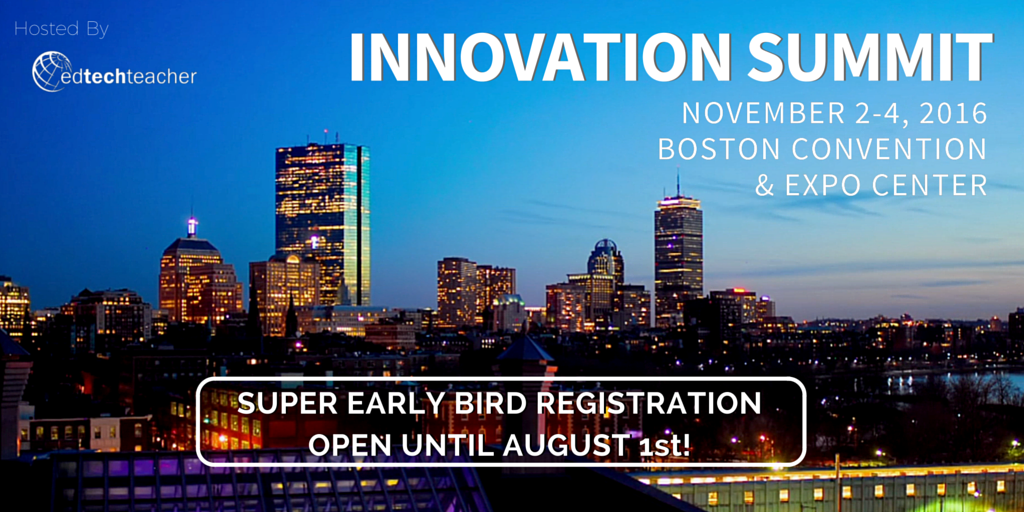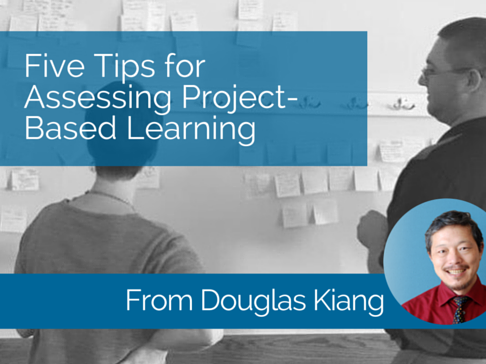This post first appeared on Daily Genius.
I love project-based work. It has given my students a sense of purpose and provided a meaningful context for the skills they are learning in my class. But despite its name, I am not grading the project so much as the process of getting there. That’s where the real learning occurs.
Consider these three students, each working on an independent project. How would you grade them?
John: Meets all intermediary deadlines on time, turns final project in on time.
Tracey: Late on every single one of the intermediary deadlines, final project is a few days late.
Peter: Misses every single one of the intermediary deadlines, pulls four all-nighters in a row in the final week, and turns final project in on time.
I know how I used to grade them. The two who turned in projects on time would do better than the one who was consistently late. But when I looked more carefully at what I really value, I realized that what I really wanted to reward was sustained effort over a lengthy period of time.
From that perspective, John and Tracey actually did the same amount of work over the same period of time. Tracey just needed that little of jolt of “I’m late!” adrenaline to get into gear. But the pattern of work still looked the same as John — just shifted by a few days.
Peter, on the other hand, may have come in with a fair amount of background knowledge, and rather than challenging himself and struggling over an extended period of time, getting stuck and then getting unstuck, he coasted through the work period, and because he’s clever and talented, four all-nighters were sufficient to come up with a decent project.
At Punahou School, with help from Dana Len in our Art Department, we created a system that values the process of learning and provides a number of checkpoints along the way. By the end of the project, kids who turn in a great project but have little to show for the process of how they got there receive a lower grade than those who can show ongoing evidence of their learning over time.
I challenge my students to design a final project that demonstrates their mastery of skills that we have covered in the first part of the semester. My students’ final project grades are based on the following five factors: Goals, Work Logs, Records of Thinking, Conference Notes, a Final Reflection, and the Project itself.
Goals
I ask students to set goals that are Measurable, Ambitious, and Attainable. They also set Personal Goals, and if they are working on a group project, Team Goals. I point out that these are different. A student could be a highly effective learner but a lousy teammate, or a fantastic collaborator and teammate who never pushes himself to further his own learning. I ask that they be specific; rather than “I want to be a better teammate”, they should provide clear criteria, such as “I will e-mail a weekly summary of what everyone’s agreed to do, to everyone on the team.” We use Google Docs to collect students’ goals and I allow them to change or refine their goals as they go (or even add new ones.)
Work Logs
These are completed every few days and account for how students spent their time. I ask that students spend a little time every day working on their project as homework, but because every project is different, I can’t give everyone the same assignment. My students need to decide what needs to get done, and assign themselves that homework. They might do research, or watch a video, or ask another classmate how to solve a problem.
A work log lists the tasks they completed and an estimate of how much time they spent. It should only take 30 seconds to do a work log. They are similar to how a professional might keep track of her billable hours. I do not accept late work logs, so a series of missed work logs is a big red flag.
Sample Work Log, November 19–21
- Watched TableView video on YouTube: 30 min.
- Re-read textbook chapter on Design: 45 min.
- Met with Anna to go over sketches and storyboards: 80 min.
Conference Notes
I require all of my students to meet with me at least once throughout the course of their project. They must take notes and keep a record of what we discussed. I base my conferences around the goals they set. We talk about any stumbling blocks, as well as additional resources they might employ to solve their problems. We also discuss their progress toward the Team Goals created at the beginning of the project.
Record of Thinking
Every week, students must file a Record of Thinking,reflective journal entry, talking about the process of their learning over that week. I ask that students go back and review their work logs for the week; write an analysis of what went well, what didn’t go so well, what surprised them and how they feel about their progress.
A record of thinking is not a longer work log. I want them to take a higher-level more metacognitive look at how they figured stuff out. A big part of critical thinking is getting stuck and then getting unstuck. The Record of Thinking is the documentation of that learning: the “Making Of” the movie. I ask students to be creative in how they convey their thinking. Many opt for a written narrative, but I also encourage them to use video, screenshots, or other artifacts.
Final Narrative
In place of a final exam, students provide me with a final narrative. I ask them to review all of their Goals, Work Logs, Records of Thinking, Conference Notes, as well as their Project, and then compose a comprehensive narrative that tells the story of its development, and their progress towards their goals along the way. How they tell the story is up to them, but they should address most, if not all, of the following questions:
- How did you start the process of designing the app/solving the problem/meeting your goals?
- What did you hope to learn?
- What challenges did you face? How did you overcome them?
- What was the outcome?
- What did you learn in the end?
- To what extent did you collaborate with others? How?
- Who in the class provided help to you along the way? How?
- What were you proud of?
- What would you do differently next time?
The most important part is that the narrative needs to cite their primary source material: their work logs, records of thinking, and anything else that they used to chronicle their progress. Students who have been diligent about documenting their process up to this point really see the benefit of this work, and the final narrative is truly a metacognitive piece grounded in actual evidence. Students who haven’t kept up with documentation do poorly, regardless of how the final project turned out.
In the end, I am not grading the finished project nearly as much as the process itself. In real life, plans change, unforeseen obstacles crop up, and project specifications often change in midstream. When I assess a project-based unit, what I am valuing is the ongoing documentation of the good work my students are doing. For my students, the act of going back and reviewing all of their documentation is a valuable part of their learning, as well.
For samples, you can explore the rubrics, examples, and handouts in this Google Drive folder.
Still time to register to learn more with Douglas this summer in Los Angeles or with the EdTechTeacher staff in Boston this Fall!



